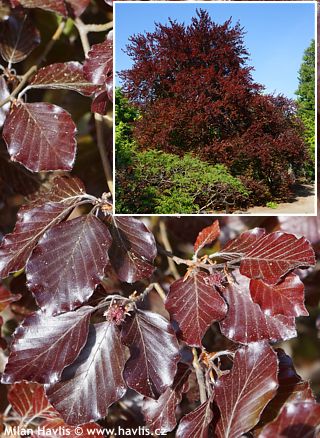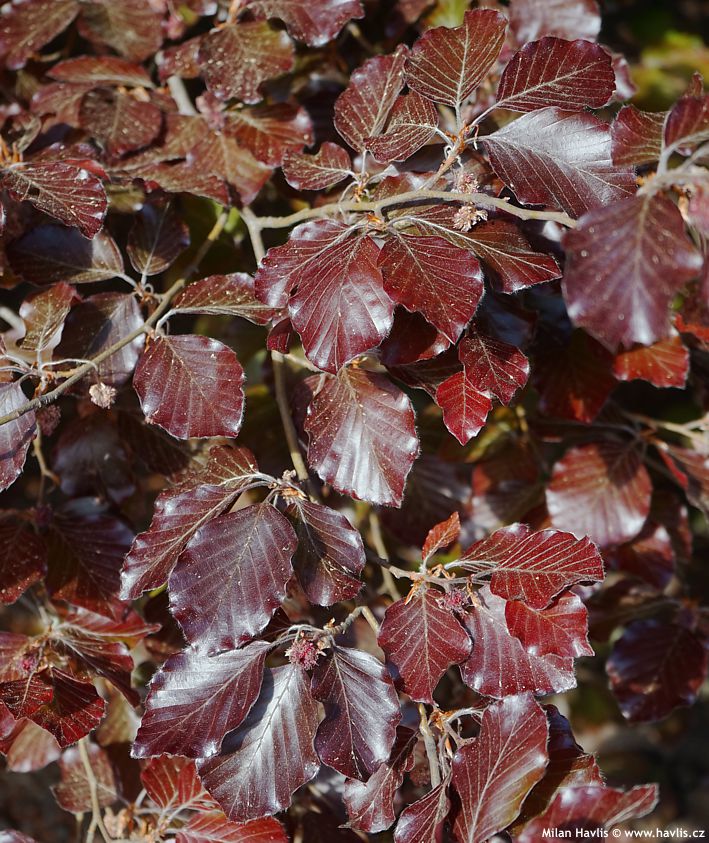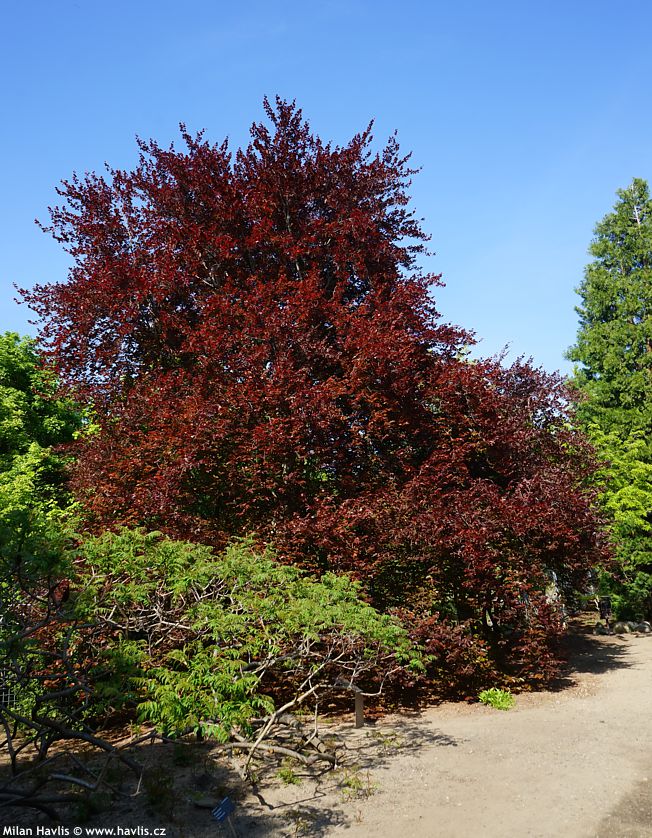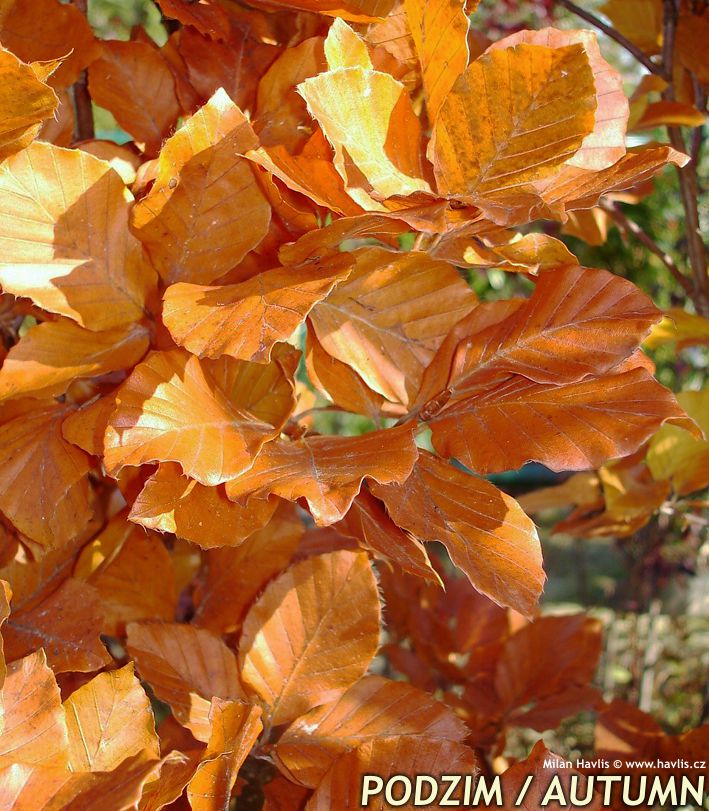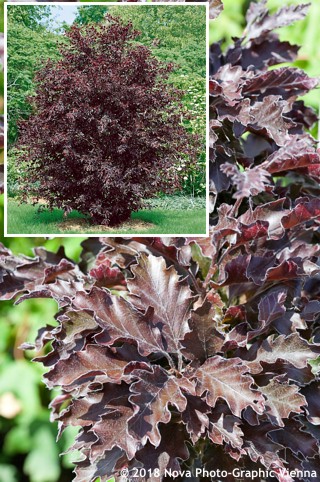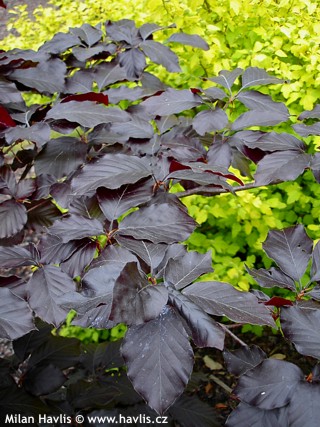Fagus sylvatica 'ATROPUNICEA' copper beech


Fagus
Beech is a reliable and hardy tree of our climate. There are many wild forms, hybridized varieties, and selections on market these days that can satisfy the taste of almost everyone. It is easily distinguished by glossy, mostly broadly elliptic leaves with conspicuous venation. Beech is used both in private gardens and in green spaces in towns and cities because it does not require any maintenance once established.
Atropunicea is a copper beech variety from the atropurpurea group but not a synonym for forma purpurea as often described. Atropunicea is a vegetatively propagated variety which keeps its characteristics and is much smaller that the species, nearly half its size. It features maroon foliage which is brighter when young, turning darker to purple-green when mature, and in autumn changing to copper red.
Naturally it forms feathered trees with uneven trunks which need staking to become straight. In nurseries they are often trained into standard trees with 2m tall bare trunks by removing lower branches. As in most beeches the canopy is rather irregular and needs age to become rounded. Atropunicea is a popular deciduous hedging plant, too, and just like hornbeams it keeps its dry foliage on the branches until spring.
Beech is not fussy about the soil type – it can live in a wide range of well-drained soils, from slightly alkaline to slightly acidic, and once established it withstands drought better than most other broadleaved trees. Grow it in full sun or just a light shade for a part of the day. It can be pruned in late winter and trimmed for a hedge in midsummer. Newly planted trees with a trunk height of 1.5 m and taller need to be staked to a strong support for at least 3 years before the roots establish. Fully hardy to min. -34 °C (USDA zone 4).
Last update 21-11-2022

































